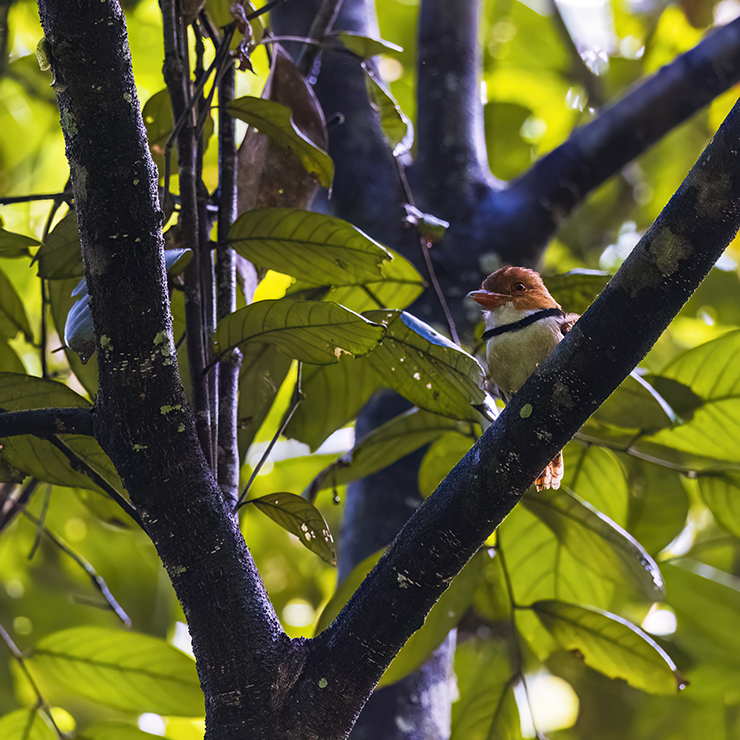
Tropical forests that are worlds away from comfortable feeder set-ups are notorious for making birders work for their sightings. Operating in the sphere of ecotourism, I understand the undeniable appeal of luxury birding – sipping coffee in flip-flops behind a tripod, binoculars within comfortable reach as multitudes of multicoloured birds descend upon the mossiest of perches at eye level to gorge on ripe bananas and papaya. As we all know, however, there is much to be seen and heard beyond the feeders. In Guyana, this concept holds true partly because of the untamed nature of the place and also due to the fact that feeder set-ups simply aren’t that prevalent.
This lottery of birding means that what one sees is wholly up to the type of habitat available. Arriving at Surama Eco-lodge at the crack of dawn meant that typical forest-edge species remained at the forest edge, within the clearing of the lodge lurked a group of Smooth-billed Ani while Tropical Kingbirds manned the tops of trees. We scarfed down breakfast while a pair of massive Red-and-green Macaws cruised in the distance. Once the last drop of coffee was no more, we wasted no time in heading into the forest.
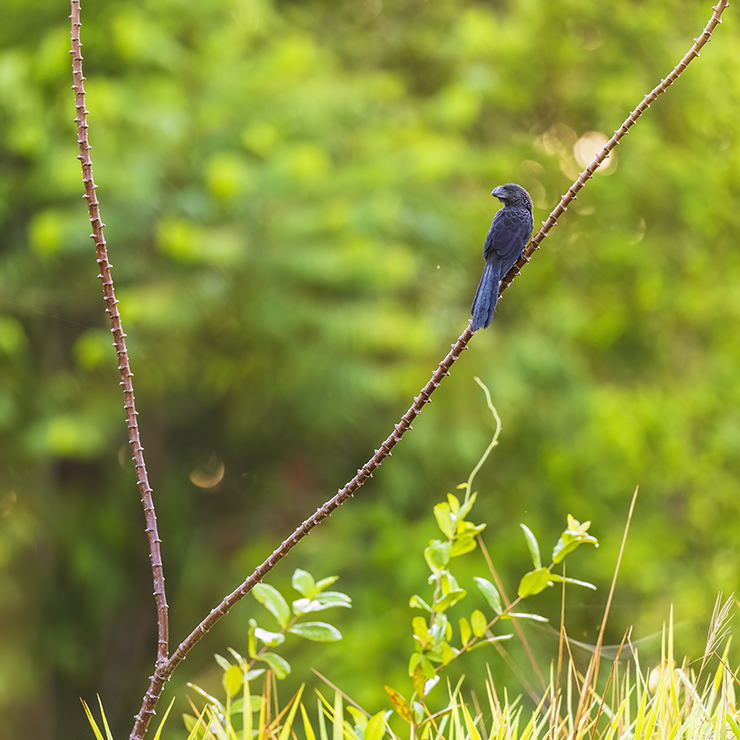
Smooth-billed Ani
As we arrived at the forest edge, a pair of Northern Slaty-Antshrikes hopped around in the vegetation. It immediately became apparent that the birding here was not going to be straightforward. I had to wait considerable time to get a direct view of one of these birds, as the foliage was quite thick.
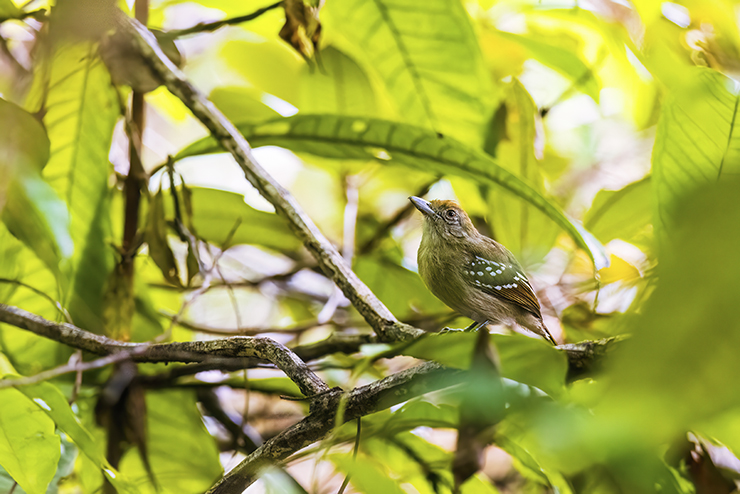
The male hopped higher and eventually out of view, but I managed to grab a photo of the female Northern Slaty-Antshrike.
Moving further along the trail, I assumed that the foliage was going to get a little thinner, but I was entirely wrong. A Collared Puffbird perched on a horizontal branch high over the trail, while we were trying to position ourselves properly to view this adorable creature a pair of dark, shadowy figures flew right past us and into the trees above. Had I not seen them when they flew in I am certain they would have gone undetected. There were no “clear perches”, after all – and these birds were designed to melt into their surroundings. Dusky Parrots aren’t green like many others in their family, and look much more vivid in illustrated plates than they do in the dim sub-canopy.
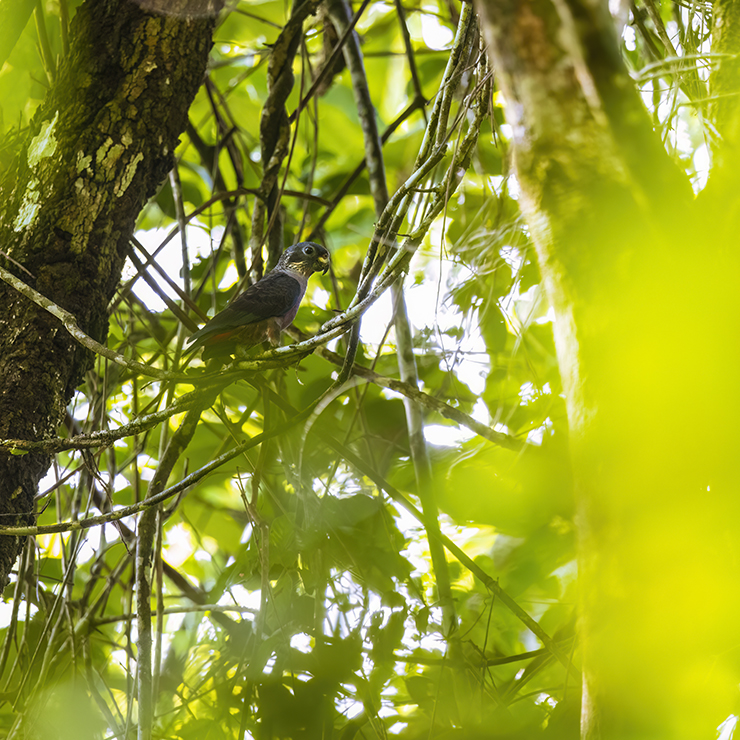
Getting a view of this Dusky Parrot was nothing short of a miracle – or dumb luck as they say.
We knew that the Collared Puffbird was not one for much movement, so when it disappeared from its original position it was simply a matter of searching the immediate surroundings for something cuter than a child’s stuffed toy.

Collared Puffbird
In the distance, our guide Leon heard the otherworldly call of a Capuchinbird. Being one of the most obscene looking members of the enigmatic cotinga family and endemic to the Guianan shield, the Capuchinbird is a target species for many. Despite my unwillingness to use playback, Leon insisted that this would be our only chance to grab a view – fortunately we did not use it extensively. It seemed as if there were already several Capuchinbirds in the vicinity, as soon as the playback started there were responses from all around. They are not birds that typically descend to eye level, by the time they returned to their silent ways my shoulders were burning – I couldn’t react quickly enough when we were momentarily checked out by a Black-eared Fairy.
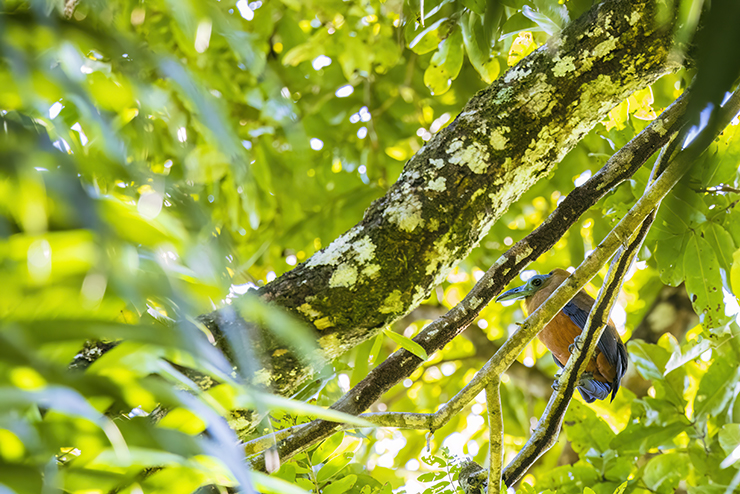
Capuchinbird
Not only were the birds all twenty metres overhead, the sun also was making it considerably more difficult to see and photograph. I must confess that at several times I considered giving up altogether. The cloudless sky meant that wherever the sunlight touched was blindingly bright, the dense foliage meant that wherever there was no direct sunlight remained in near darkness. For the birder in me, this high contrast situation meant that greys looked like blacks, and yellows looked like whites. For the photographer in me, it was near impossible to create something that didn’t look like a poster for a dance party in the early 80’s. Things changed a little when we stumbled upon a mixed flock feeding in the sub-canopy. The tiny figure of a Helmeted Pygmy-Tyrant was to me, the only noticeably different figure from Buff-cheeked Greenlet, Tawny-crowned Greenlet, and a host of antshrikes and antwrens that seemed to be indistinguishable from the gnarled network of woody vines and dancing shadows. We did manage to get reasonable views of Cinerous and Fasciated Antshrikes, before the flock gradually drifted upwards into the canopy. A mysterious becard made an appearance, which frustratingly we weren’t able to properly identify due to the fleeting sighting and harsh conditions.
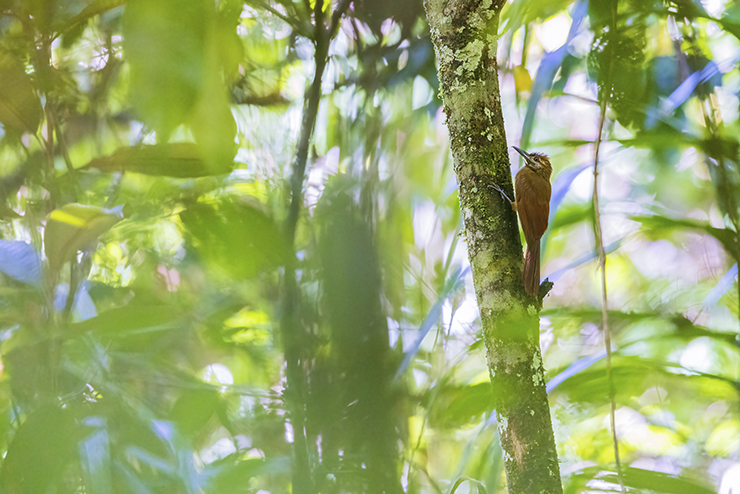
This White-chinned Woodcreeper perched silently below the ruckus, a rare sight despite its widespread distribution.
On our way out we managed to snag some more views of a Northern Slaty-Antshrike, this time I was able to make some images of the male.
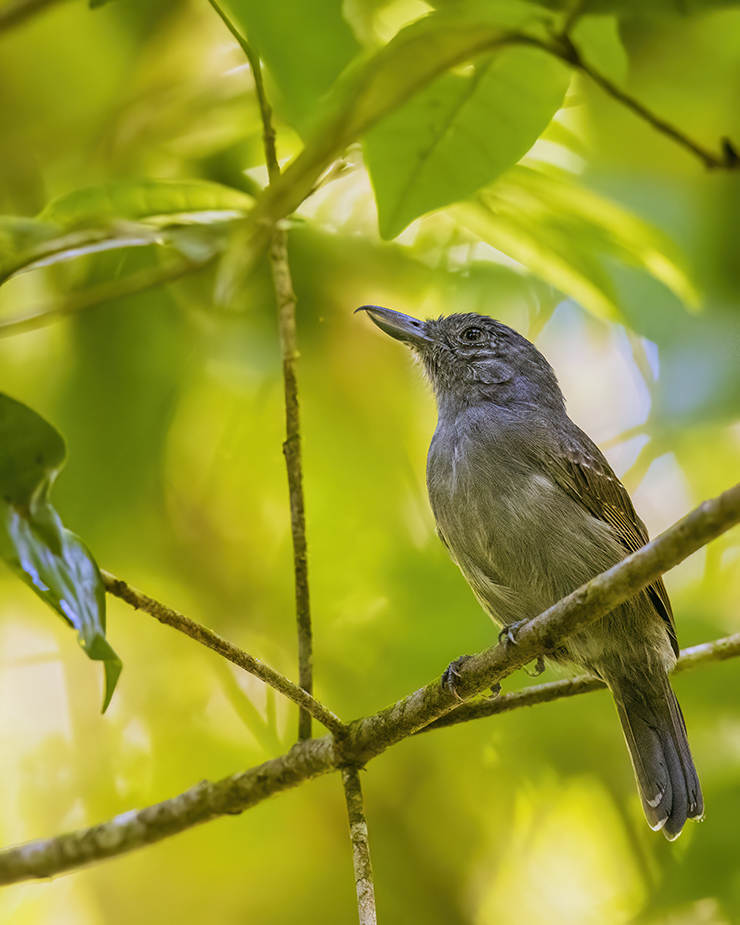
Northern Slaty-Antshrike
Once this mission was over, it was a matter of massaging necks and shoulders. Transient discomfort traded for some incredible sightings is always worth it! Experiencing the Capuchinbirds, however, was undoubtedly the highlight of the day.


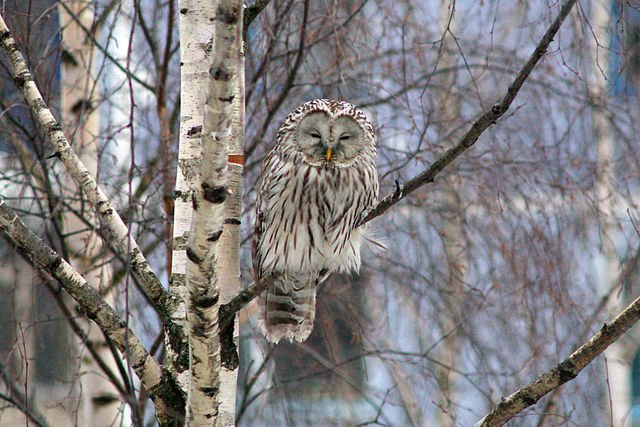
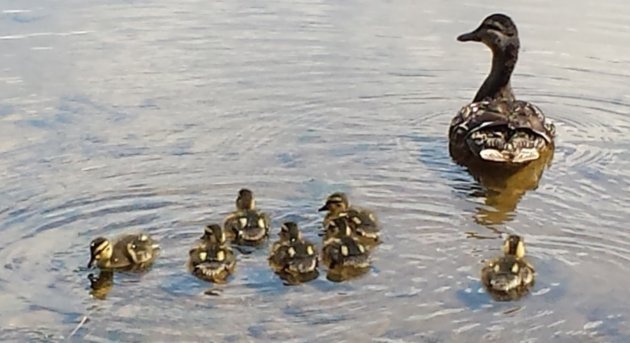

 New writers welcome – please contact us for details.
New writers welcome – please contact us for details.

















That Northern Slaty-Antshrike picture is world class – it’s so much harder to photograph than to see.
Many thanks, Peter. The photography was challenging!